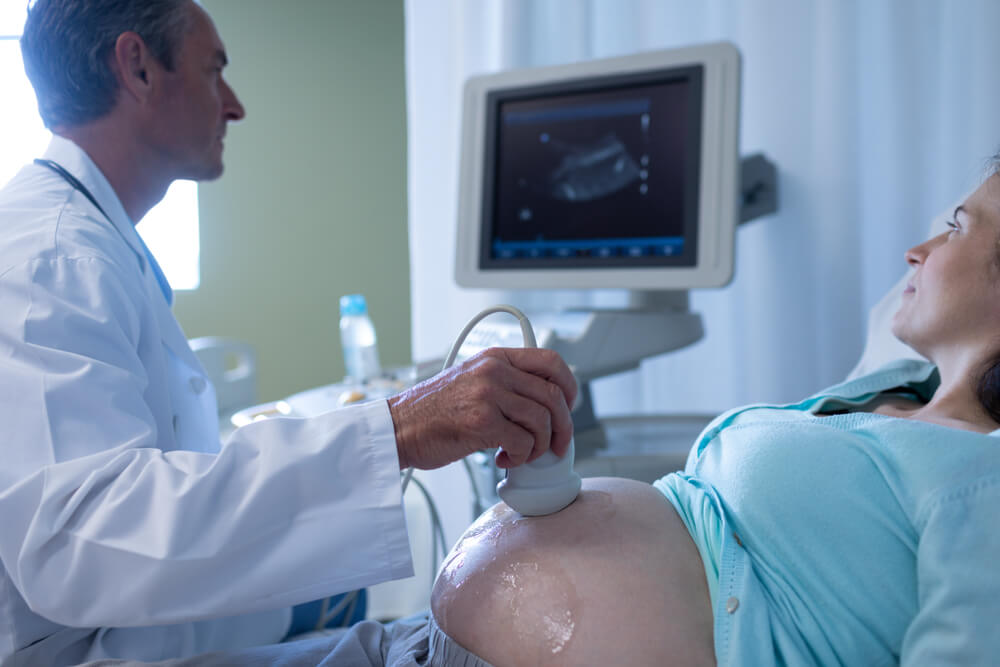Premature labor, or preterm labor, can be defined as early labor, beginning before the 37th week of pregnancy. In most cases, a typical pregnancy period will last around 40 weeks out if these “at term” pregnancies are considered at the 37-week benchmark, and anything before that will be categorized as premature labor.
In this article, our maternity care specialists have written down everything you should know about preterm labor, including the signs of preterm labor and the most efficient ways providers handle these situations.
Defining Labor and Preterm Labor
Labor can be defined as the inherent procedure by which your body readies itself for childbirth. Indicators of imminent labor involve contractions, which denote the tightening of uterine muscles and the rupture of the amniotic sac, commonly known as “water breaking.” When faced with preterm labor, the cervix at the lower part of the uterus may dilate somewhat earlier than the usual timeframe.
The possibility of preterm labor leading to premature birth, where delivery happens earlier than anticipated, exists. However, interventions often have the potential to halt the progression of labor, allowing the fetus to develop and mature within the uterus. Strategies to hinder premature labor encompass rest, administration of intravenous fluids, and medications designed to ease the tension in uterine muscles.
In specific cases, labor is induced before the full term of pregnancy arrives. This typically arises due to medical requirements demanding an early delivery. Instances of such conditions encompass preeclampsia, a condition marked by placental abruption, hypertension during pregnancy, or cases of fetal growth restriction where the fetus’s growth is not proceeding as expected.

Preterm Labor: Triggers
You have to know that there’s no single trigger for premature labor. Usually, several factors lead to going into labor sooner than it should. Some factors directly relate to previous pregnancies, medical history, and lifestyle habits. There are cases when preterm labor happens simply without any apparent cause.
How to Stop Preterm Labor?
A better question would be whether it can be stopped, to begin with. Sometimes, it can be stopped, but in most cases, it will only be temporary.
In the event of entering preterm labor, providers might suggest specific medications aimed at halting or postponing the onset of labor. If these initial medications prove ineffective, alternative options could be introduced to assist in readying the fetus for a premature delivery by promoting the maturation of the organs and lungs.
Preterm Labor Symptoms/Causes
Being informed about the signs of preterm labor is paramount, as you will need to call your provider immediately if you are experiencing the most common preterm labor, especially if they don’t resolve within an hour and are accompanied by persistent and severe pain.
- Experiencing low, dull back pin or regular tightening that is constant or comes and goes and won’t go away even if you change your position.
- Experiencing at least four or more contractions within 60 minutes that won’t stop even after you’ve changed your position and tried to relax.
- Cramping-like feeling in the lower abdomen.
- Increased vaginal and pelvic pressure.
- Cramps that resemble menstrual cramps.
- Fluid leakage from the vagina, which may indicate amniotic fluid leakage.
- Bleeding from the vagina
- Increased, tinged pink, or mucus-like vaginal discharge.
- Decreased fetal movement (less than six kicks in an hour)
- Nause and vomiting
Please be aware that you might be encountering Braxton Hicks contractions, which aid the body in preparing for labor. However, if you are undergoing actual contractions, they will become closer in frequency, escalate in pain, and persist despite rest and changes in position. If uncertainty arises about your situation, it’s advisable to contact your healthcare provider for added assurance.
Conversely, several factors can contribute to the onset of preterm labor. Typically, experts highlight three primary risk elements, which include:
- A history of preterm labor in previous pregnancies.
- Being pregnant with twins or multiples.
- Previous complications related to your vagina, cervix, or uterus.
Other risk factors usually include:
- IVF pregnancies.
- You’ve had issues with vaginal bleeding during your pregnancy.
- The baby you’re pregnant with has a suspected congenital disability.
- Lack of proper prenatal care
- Short time between two pregnancies.
- Being overweight or underweight before pregnancy
- Maintaining a poor diet
- Not gaining enough weight while pregnant.
- Illegal drug use, smoking, and drinking during pregnancy.
- Anxiety and high stress levels
- Exposition to teratogens like radiation, chemicals, and lead.
- Having to stand at your job for hours.
Medical Preterm Labor Risk Factors
- Untreated vagina or uterine infections.
- Disorders relating to connective tissues.
- Problems with the placenta, like placenta previa or placental abruption.
- Too little or too much of the necessary amniotic fluid.
- Having an irregularly shaped uterus or a cervix that’s too short.
- Intrahepatic cholestasis of pregnancy
- Previous major uterine or cervical surgeries
- Having hypertension, diabetes, or problems with blood clots.
Diagnosing Preterm Labor
Your doctor identifies preterm labor through an assessment of the cervix. If the organ is effaced and dilated, it could signal the presence of preterm labor. Alongside a pelvic examination, your provider might proceed with the following actions:
- Monitoring your contractions: Your doctor may use a monitor to measure the contractions you are having.
- Ultrasound: This can help determine the fetus’s position and size. It can also check for amniotic fluid or placenta-related problems.
- Fetal fibronectin test: This involves taking a vaginal fluid sample to look for this protein which makes the amniotic sac stick to the uterus. If it’s in the discharge, it may signal premature labor.

Treating Premature Labor
In the case of experiencing premature labor, medication might be necessary to decelerate or halt the progression of labor. If it has advanced to a point where stopping it is not feasible, your healthcare provider might opt for an early delivery of the fetus. Additionally, medications are available to support the maturation of the fetus’s organs and lungs if they are born prematurely.
Your doctor will assess the following:
- How far you are into your pregnancy.
- Whether delivery is safe for the baby.
- Other reasons that may lead to early labor.
Medications are commonly employed by experts to impede the progression of labor, thereby affording the fetus additional time for development. Typically, medical professionals will resort to the following medications:
- Tocolytics
- Corticosteroids
- Magnesium Sulfate
When you have had issues with premature labor in the past, your provider might advise taking medication
as a precautionary step to thwart early labor. The commonly used approach involves progesterone, which is administered through a suppository inserted into the vaginal region. Alternatively, in specific cases, your healthcare provider might propose a cervical cerclage. This procedure entails suturing the cervix to uphold its closure and prevent dilation.
Opt For Professional Prenatal Care
While it can be difficult to prevent preterm labor, there are several steps you can take to decrease your risks. Refraining from alcohol and tobacco use, eating a healthy diet, and maintaining a healthy diet are just some of the things that will go a long way in ensuring a healthy pregnancy.
Also, attending regular prenatal care appointments with your provider is essential to keep things in check. Request an appointment now with our experts to learn more about the essentials of a healthy pregnancy.


